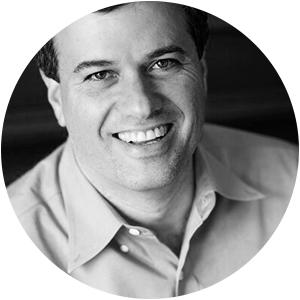Dear Sean,
A few years ago, I made the transition from fashion to design, and I’ve found it to be one of the most unregulated industries, without set standards for billing. You can put a price tag on your talent, yet for some reason individuals and companies alike seem to feel they can get your work for free. I’ve recently been asked to consult for a commercial real estate venture, and they’ve offered to pay a flat fee for my creative direction—albeit nothing close to 20 to 30 percent of the overall budget. Now they want to bring in a procurement company to execute. In that scenario, how much should the designer be paid versus the procurement company?
Pushed Around
Dear Pushed Around,
Regulation and standards are a double-edged sword. On the one hand, they can set a baseline that the consumer can rely on. (Think: doctors, lawyers and accountants.) On the other hand, the baseline is mostly not relevant to who you would actually hire. I can only speak for myself, but I would never have hired me to be my lawyer right after I passed the bar in New York and Connecticut—I did not yet have enough real-world experience to feel confident in my ability to offer meaningful advice.
My thought is less that there needs to be industry-wide billing standards, and more that there must be an understanding of what clients are paying for, when and why—including the idea, design, production and reveal. When clients understand what designers value and when, they can pay for it or not. In that sense, you have it backwards. Clients only feel that they can get your work for free or devalue creatives when, ahem, creatives have not done the work of valuing themselves. The old axiom that closed mouths don’t get fed applies—as does the idea that pigs get fat and hogs get slaughtered. It is your job to know what you need to do your work, and then how and when you will receive it in order to recognize the benchmarks of value delivered.
With the above in mind, let us tackle your commercial project. First, a word about the difference between residential and commercial work: With residential projects, you are the star; in commercial work, you are the co-star. Many players go into the success of a commercial project, and there are specific, rational metrics at stake—namely, whether or not this design will be financially profitable. Residential projects, meanwhile, are all about whether your work can transform the way your clients live.
If you can appreciate your role as a co-star, then you can be paid according to the value of your presence and advice and how long it is needed. Your consultation should be based on what you need per month in overall revenue and what percentage of your time this project will take for you to complete. Say you need $20,000 a month to feel confident about your business, and this project will take half your time for five months—then you need $50,000. The question is how and when you are going to get it. If your value is providing creative direction without responsibility for purchasing, then how about a meeting fee of $5,000 with a minimum of two per month? You will need to prepare for the meeting, attend the meeting, and then provide deliverables related to the meeting; rinse and repeat 10 times to earn your fee over five months.
Notice I did not say hourly or some other random number like 20 to 30 percent of the project budget. If the value you provide is for your advice and documentation of that advice, earn what you need to provide that. Charging for each meeting is one way to get there. You can charge hourly, but unless you want your brain (nit)picked to death, you have to frame what that looks like, with minimum hours, minimum and maximum increments, and so on. The discussion has to be: “For me to be a consulting actor in this endeavor, here is what that looks like.”
Yes, on your terms, always. Leave the “no” to your clients. Your business voice is not for everyone, but that does not mean you should not use it with everyone, as those who can and want to listen will. As with all things pandemic, deeply authentic value is all that will matter moving forward. The expression of that value is your work and your work alone. Live there.
____________
 Sean Low is the the go-to business coach for interior designers. His clients have included Nate Berkus, Sawyer Berson, Vicente Wolf, Barry Dixon, Kevin Isbell and McGrath II. Low earned his law degree from the University of Pennsylvania, and as founder-president of The Business of Being Creative, he has long consulted for design businesses. In his Business Advice column for BOH, he answers designers’ most pressing questions. Have a dilemma? Send us an email—and don’t worry, we can keep your details anonymous.
Sean Low is the the go-to business coach for interior designers. His clients have included Nate Berkus, Sawyer Berson, Vicente Wolf, Barry Dixon, Kevin Isbell and McGrath II. Low earned his law degree from the University of Pennsylvania, and as founder-president of The Business of Being Creative, he has long consulted for design businesses. In his Business Advice column for BOH, he answers designers’ most pressing questions. Have a dilemma? Send us an email—and don’t worry, we can keep your details anonymous.
Homepage photo: Shutterstock





























